Hot Mess
After years of unrestrained infighting and ethical atrophy, will Ottawa’s press gallery have to answer to Parliament?
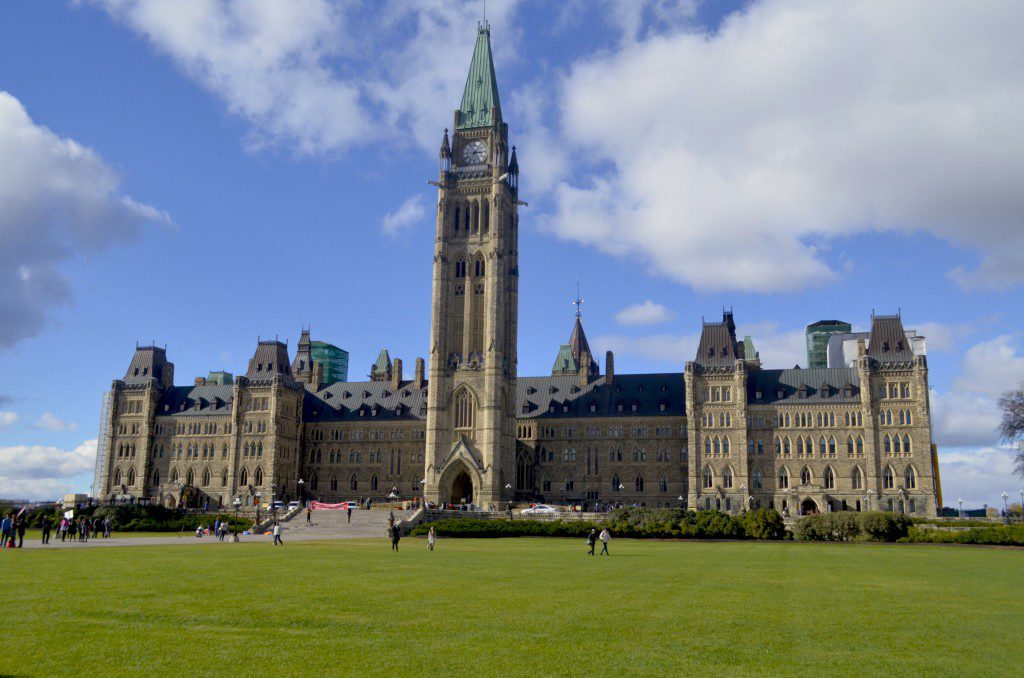
Photo by Viviane Fairbank
Mark Bourrie doesn’t consider himself a regular member of Ottawa’s Parliamentary Press Gallery. “There are people who are scrum-chasers,” as he puts it, “and there are people who actually put time into their work.” He sees himself as the latter. So when Senator Mike Duffy asked Bourrie for a favour, one balding small-town boy to another, the long-time freelance writer and journalism teacher thought nothing of it. He questioned the subsequent cheque, but, in the end, it was a mere $500—little money for the time he spent ridding Duffy’s Wikipedia page of the work of rancorous internet trolls—and he didn’t want to insult his former press gallery colleague by not cashing it.
Such relationships tend to stay private on the Hill. But five years later, the cheque was evidence in the embattled senator’s bribery and fraud trial. Bourrie was subpoenaed as a witness, and journalists covering the court case took note when they saw his name on the list. In an unusual breach of press gallery solidarity, David Akin, now parliamentary bureau chief for the Sun Media chain, wrote an article for Canadaland about the unethical conduct of two journalists who did work for Duffy: Ezra Levant and Bourrie. The problem, Akin explained to me, wasn’t that Bourrie was friendly with a senator or that he accepted money. It was that he was a Gallery member when he did both of those things. On Twitter and various news sites, others started to voice their concern.
Now, Bourrie wavers between dejection and belligerence. “When I think about the situation, I almost want to cry,” he says at first. But later, when I bring up Duffy again: “I will sue them, the next person who goes down that fucking road.” After several arguments on Twitter, Bourrie threatened lawsuits against Akin, Canadaland and other critics. He followed through in only one instance, against fellow parliamentary journalist Elizabeth Thompson, who’d eagerly jumped into the fray on social media. That lawsuit has since been settled out of court.
News of the cheque circled through the Gallery and reached its president, Le Devoir’s Manon Cornellier. Her hands were tied: the Gallery’s constitution makes no mention of conflicts of interest, only of using membership to “obtain a benefit other than by journalism.” There was nothing to suggest that Bourrie had used member privilege to get the work with Duffy. Nothing prohibits journalists from taking on work from the privacy of their own homes,Cornellier says. “Look at our bylaws,” she told those who voiced concerns. “We cannot sanction him.”
The Gallery’s structure and constitution suggest an organization that has been historically unwilling to address its flaws. Recently, accusations of misconduct and heated infighting among some members provoked a threat to the Gallery’s independence. In an informal message last year, the sergeant-at-arms of the House of Commons was clear: if journalists can’t police themselves, Parliament will do it for them.
When I speak with press gallery members, they tell me there is no story here. They insist, as an editor might advise a cub reporter, that context is everything. The context in this case: “This is nothing new, ” “It’s not all that unusual” and “It happens in every newsroom.”
Of course, the press gallery is not a newsroom. It’s an odd beast: a self-governing Parliament Hill organization responsible for doling out memberships and overseeing reporters’ work on the Hill. Despite deriving authority from the Speaker of the House, the Gallery has valued its independence from the House of Commons since its inception in 1866. It represents more than 60 news agencies with over 350 members, including daily journalists, audio and video technicians, parliamentary bureau chiefs, producers and freelancers. At its helm is a board of 10 volunteers, typically elected without contest, serving one-year terms. It’s a “thankless job,” members tell me, one that many refuse to assume. The Gallery’s bureaucracy includes a collection of ad hoc subcommittees; they offer last-minute proposals or write reports that never lead to change. Thirteen government staffers are also employed by the House of Commons to assist the Gallery with technicalities such as arranging press conferences.
Still, a press gallery membership isn’t something to be taken lightly. It can’t get you everywhere on the Hill, but a permanent pass means skipping full security checks at the entrance of Centre Block, and it offers substantial benefits: free recordings of scrums, use of the parliamentary library and access to the outs of committees and caucus meetings. If you’re lucky, it also gets you a seat in the Gallery’s Hot Room.
The floor plan of Centre Block on the Parliament website doesn’t show the Hot Room: you have to work on the Hill to know it’s on the third floor, between the elevator and the Senate chamber. The room is iconic to parliamentary reporters. Grey with tall windows, it has hosted respected journalists and, back when Hill personalities still set foot inside, better-known politicians. When I visited, it was at capacity, as it has been for years. Government staffers are crammed by the main entrance, cubicles piled together as if a tectonic shift had compacted them. To the left, two dozen journalist workspaces house an array of national reporters and freelancers.
Now nearing its 100th birthday, the Hot Room is a microcosm of the issues faced by the Parliamentary Press Gallery, a vessel for the culture of pettiness and irascibility that its members have allowed to fester. There’s an upside to that, if you look for it: with bad behaviour drawing scrutiny, the Gallery may have no choice but to address its issues and embrace reform—as long as its members see the value in actually doing so.
No standard code of ethics governs parliamentary journalists: much is left to personal discretion. All publications have their own policies, from CBC’s increasingly strict Journalistic Standards and Practices to others’ reliance on common sense. “There are no hard and fast rules,” Andrew Potter told me in his last few months as editor of the Ottawa Citizen, before producing excerpts from the newspaper’s code of conduct. “But at all times, staff are supposed to be mindful of the fact that they are representing the Citizen.” Hot Room veteran Glen McGregor, a well-established political reporter who was with the paper until February, says he counts an aide to a politician among his personal friends—and quoted him in articles for the paper a few times per year without wondering whether his boss would approve.
But in the Gallery, freelancers, who aren’t bound by any one outlet’s official codes, work side-by-side with salaried staffers governed by their publications’ potentially strict rules. Parliamentary journalists are members and representatives of the Gallery, and yet it has little authority over their actions. It’s not uncommon for members to later take their expertise to the “other side” of the Hill (as James Cudmore, a former CBC defence and parliamentary reporter, did in January). Cornellier acknowledges that the Gallery should impose a more specific code of conduct relating to conflicts of interest but says the board is “doing other stuff for now.” Michael Bate, editor and publisher of the Ottawa-based magazine Frank, which has covered many insider press-gallery stories, echoes the sentiments of many: “To function on the Hill without making deals or compromises is impossible. ”
The debate over membership and ethical behaviour isn’t new. In 1991, following intra-Gallery squabbles and a probe by one curious Citizen columnist, journalists discovered that some members had consulted and written speeches for Hill entities. Cornellier, who was on the board in ’91, received $750 from the Canadian International Development Agency for writing an article prior to her appointment in fall 1990. Jeffrey Simpson, a long-time Globe and Mail parliamentary columnist who’s still active on the Hill today, made almost $8,500 from speech writing and speaking engagements for various government bodies. Other Gallery reporters cashed between $200 and $8,000 for writing speeches, consulting and, in one instance, performing “research services” for the Prime Minister’s Office (PMO). After the three-month suspension in 1990 of one member who performed unpaid contract work for a company related to the Department of External Affairs—despite others, who had been paid, going unquestioned by the Gallery—things started to get uncomfortable.
Frank Howard, the Citizen journalist who uncovered the payments, suggested creating a disclosure policy for paid work done by Gallery members on behalf of political entities. His proposal didn’t go through. Instead, reference to “unethical behaviour” was removed from the Gallery’s constitution altogether—an amendment recommended following a short study by several former Gallery presidents and Carleton University’s Stuart Adam, now professor emeritus. The reference to unscrupulous conduct, they concluded, “stigmatized an individual for actions which are a good deal short of being unethical.”
In a later article, Howard wrote, “Even those journalists in the Gallery who had fought for a group conscience…came to believe that the Gallery had neither the will nor the power to do much about ethics. In the end it also became apparent that the only institutions willing and able to impose professional standards were employers and not the journalists themselves.”
Listen: Senior editor Viviane Fairbank and multimedia editor Allison Baker discuss journalists-turned-politicians
Inside the Hot Room, McGregor sat one aisle over from Bourrie until January. During almost 20 years as a reporter for the Citizen, McGregor broke stories such as the robocalls scandal after the 2011 federal election. He’s now at CTV, and he wants to stay in the Hot Room, at least part-time. Some journalists are relegated to the National Press Building, across the street from Parliament Hill, and some work from offices in town. Space in the Hot Room is occupied by those who have been on the Hill long enough to claim status and to cycle through the room’s waiting list. McGregor has seniority, and last year, he was the only active member of a subcommittee that handled the allocation of Hot Room seats. His recommendation that priority should go to journalists with no other workspace available has so far had no effect. In any case, the rules would apply only to new openings. Some members estimate it takes a year of waiting to get a seat. Terry Guillon, who was until recently the Gallery’s chief staffer, says the current waiting list for the Hot Room is four names long. Before taking a new position this February as media liaison in the PMO, he wrote a farewell email to members: “I can assure you that I will keep in touch with you all.”
Back in the 1960s and ’70s, the room in Centre Block hosted almost all Hill journalists. There were only one or two government staffers in the ’60s, not the 13 that Guillon oversaw until February. They worked as assistants and, on the side, as bartenders at “The Blind Pig,” a slang name for the bootleg bar inside the Hot Room open to the drinkers of Centre Block. Sure, politicians would meet journalists for interviews, but they would also get together for a drink during a long day on the Hill, which could last until 10 p.m. or later.
There were few questions of ethics—not because parliamentary journalists behaved better back then, but because people were less keen to police such behaviour. Journalists would often work for newspapers with set political ideals, and the idea of a group of press gallery members meeting Pierre Trudeau at 24 Sussex Drive for a gin and tonic or two seemed like a luxury of the job. Gallery dinners were off the record and involved much camaraderie and boozy comedy. Tensions ran high in the close environment, and the few female reporters who worked there were rarely treated as peers.
The makeup of the Gallery shifted when TV and radio journalists entered the mix, just as it did more recently with the introduction of online publications. The room was already prime real estate in the ’60s, and when it overflowed, reporters spilled into the hallways, stacking old Hansards. The sergeant-at-arms, in perhaps the first parliamentary interference in press gallery aff ordered the squatters out. The National Press Building was designated as the new home for Hill journalists, and the space in Centre Block became the Hot Room: exclusive desk space for a privileged few.
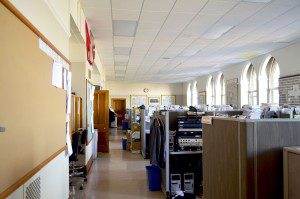 The aging core of veteran Hot Room journalists hasn’t made an effective push to abandon that old boys’ club vibe. Though the bar counter has been demolished, some old attitudes remain. There are rumours of resident journalists erupting into petty arguments, typically ending in shouts about each other’s neurotic behaviour. On social media, Gallery members get into “little pissing matches.” One Hot Room denizen tweeted a screenshot of another’s profile on a hookup website, effectively outing the private life of a journalist to #cdnpoli followers. “It’s difficult to be a young woman in the press gallery,” says one female former reporter. “You have to develop a thick skin.”
The aging core of veteran Hot Room journalists hasn’t made an effective push to abandon that old boys’ club vibe. Though the bar counter has been demolished, some old attitudes remain. There are rumours of resident journalists erupting into petty arguments, typically ending in shouts about each other’s neurotic behaviour. On social media, Gallery members get into “little pissing matches.” One Hot Room denizen tweeted a screenshot of another’s profile on a hookup website, effectively outing the private life of a journalist to #cdnpoli followers. “It’s difficult to be a young woman in the press gallery,” says one female former reporter. “You have to develop a thick skin.”
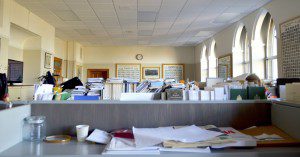
Inside in the Parliamentary Press Gallery’s Hot Room, in the Centre Block of Parliament Hill. Photos by Viviane Fairbank
One September 2014 incident involved Hot Room residents Tom Korski, co-founder of news website Blacklock’s Reporter, and Thompson, the woman Bourrie took to civil court over their Twitter tiff. There was history between them: in 2012, Korski ran against Thompson for an executive position in a rare election contest. He lost. The same year, Thompson raised questions about how Korski and his wife, Holly Doan, were accredited. However, thinking back on it now, Thompson says she can’t explain what provoked the incident. She entered the Hot Room, and, as she was walking to her desk, Korski began speaking to her. She turned on her recorder and captured three minutes and 20 seconds of the altercation.
The recording begins with muffled words, quickly growing louder as he says, “I’m going to take your fucking head off.”
In the past, conflicts between members, usually less aggressive in nature, tended to be kept quiet. But the recording was ammunition, and the story spread throughout the Hill. The timeline of events is unclear, but eventually the executive board worked with Kevin Vickers, then sergeant-at-arms, to resolve the dispute, rather than dealing with it internally. Incidents were not uncommon, but the Gallery had never asked the government to step in before. Vickers gave the board a quiet, simple caution: get your house in order or we’ll be forced to eject those who can’t behave from Parliament Hill. It was a blanket warning for all manner of misconduct, not just verbal abuse between members.
When contacted for this story, House of Commons administration maintained that it has an “arm’s length” relationship with the press gallery. Vickers declined to speak without House of Commons authorization.
At the same time, the board was hearing about an increasing number of incidents involving unprofessional behaviour—not just from Gallery members, but also from security guards, MPs and government staffers. The executive received too many complaints to do nothing, says a member familiar with the situation. With the Gallery spinning into disarray, the board had to regain control.
On a Friday in February 2015, one week before the Gallery’s annual meeting, the board sent members an email with the draft of a harassment policy, a “shotgun amendment” to the constitution. Within hours, a small number of members were protesting, and the executive faced objections, serious criticisms and even personal affronts. On Twitter, some people blamed then-president Laura Payton of Maclean’s. The same Gallery member who posted his colleague’s romantic life on Twitter tweeted to Payton, “You’re a fascist. Is this grounds to kick me out?” The Korski-Thompson conflict provided some context for the “heated week” of discussions that followed, but the intent wasn’t to target select members. Rather, government pressure meant the Gallery needed widespread regulation.
Nonetheless, the first draft of the policy was widely dismissed for being poorly written and not including a method for determining which accusations would be considered or how discipline would be administered. It allowed the executive to arbitrarily penalize an accused “harasser” up to the point of ejection from the Gallery. Freelancers, the most vulnerable members, sought an arbitration process. Bureau chiefs wanted matters handled by individual publications. Others didn’t think it was the Gallery’s responsibility to arbitrate disagreements at all.
The first draft did offer insight into the board’s motivations, though it was largely ignored: if journalists did not have the capacity to handle serious allegations, “confidence in the ability of the Gallery to properly control its membership” would be lost and the Gallery’s authority threatened.
The executive quickly withdrew the proposal and formed a sub-committee to redraft the policy with input from members. James Baxter of iPolitics suggested a policy exclusively for the Hot Room, but his proposal was shot down. At a special meeting in June 2015, a new version of the harassment policy amendment was voted in and approved by the Gallery. There is a long, detailed process to go through in evaluating a complaint, but it gives the Gallery power to repeal membership based on accusations of harassment.
As of mid-February, no one had submitted a complaint. If and when someone does, it will take a substantial accusation for membership to be revoked—but better the Gallery does it than the Speaker of the House. Some think it’s an important step forward. Others see it as a significant breach of journalists’ rights.
Last August, Gallery journalists received an email announcing a membership review, another show of strength from the executive. Unlike previous reviews, in which the board met to unceremoniously check off names it recognized from the list, this one required all members to submit a form, much like the initial applications journalists must fill out to join the Gallery. The onus was on them and their publications to prove they deserved to be included.
When I first interviewed Akin, he told me the Bourrie-Duffy incident likely instigated the membership review. Bourrie says it was probably the Korski-Thompson altercation. Many other members tell me the membership review’s timing was coincidental, the review itself routine. Certainly, the atmosphere of the Gallery has changed since the previous review several years before, as has the atmosphere of the Hill itself, where security was tightened significantly after the 2014 shooting. Regardless, the goal of the revised process was clear: to make sure every accredited journalist truly deserves to be on the Hill. It comes down to a simple question: is it right for the Gallery, or the Speaker of the House for that matter, to decide who gets to report on the government?
There have been divisive cases before. Frank had its membership revoked in the early 2000s after a few of its journalists used their security clearance to sneak around the Hill in an attempt to demonstrate security flaws. Stephen Taylor, a blogger, wrote that he was denied membership because of his work with a conservative think tank; he added that he was escorted out of Centre Block by security in 2007, at the request of the Gallery executive, for trying to report from the Hill without a membership. In November 2012, Korski’s Blacklock’s Reporter threatened to sue unless the Gallery approved the news site’s application as a journalistic operation. The conflict ended three days later when Blacklock’s features editor Doan was accredited under the publication’s name.
Most notably, Robert Gilles Gauthier, who had a long-standing rivalry with the Gallery over its refusal to recognize his independent publication, The National Capital News, as a legitimate journalistic enterprise, took his rejection of full membership all the way to the Human Rights Committee (HRC) of the United Nations in 1999. The HRC determined that the Canadian government was violating the International Covenant On Civil and Political Rights, but the federal court rejected it as an invalid foreign judgment.
At times, personal tensions are related to membership disputes. “It’s always been the case,” Cornellier says. “Every year, you have people who say, ‘This person should not be a member.’” Before the membership review, the Hot Room had its share of “borderline cases,” as Cornellier calls them—those who might not satisfy the requirement of producing journalism on a regular basis. The review was meant to separate private vendettas from legitimate concerns. By the November 1, 2015, deadline, most members had submitted a form. The review revealed that some no longer needed or used their passes, while others had been previously accredited under the wrong organization or status. The process doesn’t seem particularly effective at keeping out borderline cases: they can simply submit two letters from employers and stay on-board. In late December, a few freelancers were still working on providing the required letters.
The harassment policy and the membership review did not work to target either freelance journalists or specific Gallery personalities, as some members have claimed. But in theory, both strengthened the Gallery’s structure and power and, more importantly, asserted those qualities before the House of Commons. Keeping power out of the government’s hands without giving too much of it to a volunteer board is a balancing act. After all, what starts with a harassment policy might end with a code regarding conflicts of interest—and some members are against that idea. What’s more, only a few are willing to donate their time for the sake of the Gallery, and those who’ve done so have often been targets of abuse on social media.
It’s hard to tell if the preferred outcome is better Gallery behaviour or just less outside attention. As one board member said in a meeting last year, “The Gallery is not a morality police.”
There are other pressing concerns the executive would rather focus on. Minutes from 2015 meetings show that, typically, conversation topics range from journalistic access, including dealings with the PMO and the Supreme Court, to building renovations and the annual press gallery dinner. “That’s what happens with volunteer boards,” says a member familiar with the executive’s decisions. “We have other things to do.” And yet, as 2015 progressed, the board gave more and more consideration to the harassment policy and the membership review while putting other issues aside.
The executive sees itself as a small group of good people trying to do good things, but it finds itself tackling a problem too big to handle without the full support of Gallery members.
When superficial tweaks to the status quo seem sufficient for the majority of members, the prospects for meaningful change appear futile, even if settling puts journalists in the crosshairs of the very people they’re supposed to be keeping honest and holding to account.
Before the problem can be solved, Gallery members need to understand the magnitude of their mistakes—and start accepting the need for reform. But the reluctance of members to take responsibility for the culture of the press gallery makes me doubt reform will ever happen.
At the end of an evasive interview with a Gallery member, I try to address the problems of interpersonal conflicts in the Hot Room once more.
I rephrase: “Given the context, given that this has been happening for a long time—do the problems exist?”
There is a pause.
“I suppose. Off the record, yes.”
Clarification: The online version of this story has been changed to reflect the fact that Parliamentary Press Gallery members have access to the outs of committee and caucus meetings, not the meetings themselves. It has also been changed to clarify the timeline of Manon Cornellier’s involvement with the PPG board in the early 1990s.
Corrections:
March 29, 2016—The print and original online version of this story included a photo showing a post-it note. The photo caption incorrectly indicated that the post-it was a reminder to its owner to apply for freelance status as part of membership review changes. The Review regrets the error.
March 31, 2016—The print and original online version of this story said that Laura Payton was at Macleans when the Parliamentary Press Gallery harassment policy was first proposed. In fact, she had not yet started working for the magazine.





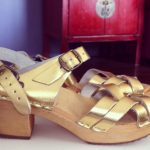







































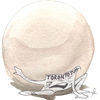
Making reference to Bourrie’s hair loss is offensive to men as it equates the amount of hair they have with their competence and value as a human.
“one balding small-town boy to another”
Wtf? Very professional. And two corrections already issued within a day of publishing? Great work, all around. This piece is being (rightly) torn apart on Twitter. Looking forward to what else unravels in the process.
Let this be a warning to editors who are pitched a piece by a reporter who has decided what the story is long before she has made her first phone call. Ms. Fairbank has written an intriguing piece. Unfortunately, it is a stranger to the truth. Those — like me — who dealt with her in Ottawa found her evasive and rather strange, since she never seemed to deal with anyone in a straight manner or seek a real response to things other people said about the subjects of this mess. Let’s take a walk through this piece and see if we can’t reconcile reality to what Ms. Fairbank wrote.
First, who am I? Ms. Fairbank is deliberately vague about that, since it’s a fact that gets in the way of her version of the truth. I write magazine pieces and op-eds for my journalism. But primarily I’m an author and academic. 1n September, 2004, at the age of 47, I began work on my PhD in History at the University of Ottawa. I defended it in January, 2009. The thesis was on the Canadian press censorship system in the Second World War and was published by Douglas and McIntyre in 2012 as The Fog of War. The book reached No. 6 on the Maclean’s best-seller list. The next year, Dundurn published a collection of Canadian war correspondence that I edited under the title Fighting Words. In 2016, HarperCoillins published my book Kill the Messengers: Stephen Harper’s Assault on Your Right to Know, which was a national best-seller and a Globe and Mail Top 100 Book of the Year. Three weeks ago, HarperCollins published my book The Killing Game, which is an analysis of ISIS propaganda and communications systems. I teach History at Carleton and Canadian Studies at the University of Ottawa as a sessional lecturer from time to time. I am also finishing my second year of law studies at University of Ottawa the and will start working this summer at a firm, helping in online defamation and invasion of privacy cases. Ms. Fairbank knew, or could have know, all of these things but she made sure her readers never did.
I met Mike Duffy in the Press Gallery in 1994. I wrote to the CRTC while he was a CTV journalist with a desk next to me in the Hot Room, asking that the Commission reconsider its decision to keep CTV’s cable news channel on a 15-minute repeat cycle, which prevented Duffy from having a full-length daily show, The Commission did change that policy. Well before he was appointed to the Senate, he had asked me for help dealing with online trolls, a problem that I had on my own Wikipedia page.
When did he do that? When I was teaching full-time at Concordia University, another fact Ms. Fairbank knew, but realized detracted from her thesis that I was a shabby freelancer who whores myself out to politicians. I was teaching journalism at Concordia University in Montreal from 2007 to 2009 (while I was finishing my PhD) and had kept my Press Gallery membership to do work in off-months and a day or two each week. It was at this time that I did the bulk of the Duffy online reputation work. I kept doing it after Duffy became a Senator, knowing that I never covered the Senate and, in fact, in 21 years of being on the Hill off and on, had not written a story about it in this century. I did write two columns about Duffy after the expense scandal broke — neither of them defending his spending — and mentioned him in Kill the Messengers as an example of how insider journalism works.
Ms. Fairbarn confuses the Hot Room with the Press Gallery. The Hot Room is the old newsroom in the main Parliament building. About 40 journalists work there, ranging in age from early 20s to one delightful man in his 80s. We are, of course, aging, but at the same rate as Ms. Fairbank and her over-eager Ryerson colleagues. Another 350 members of the gallery — journalists and support staff — work the in newsrooms off the Hill. The Hot Room is the gallery’s last toe-hold on the Hill. It is not the “press gallery”. Most gallery mkembers rarely, if ever, visit it.
The gallery is not in danger of being taken over by the Speaker or the House of Commons. In fact, the Speaker’s legal counsel have defended the present accrediting system in Ontario Court (General Division) in 1984, the Federal Court in 1985 and 2007, the Competition Bureau in 2007 and 2009, and the Human Rights Committee of the United Nations in 1987. The last time the Speaker’s office weighed in on a Gallery membership issue was in 1979, to support the Gallery’s decision to exclude replacement workers during a strike by Canadian Press journalists. Ms. Fairbarn is deliberately vague about the threat of the Gallery losing independence for the simple fact that there is no documentary proof that this threat exists, and a long history that proves it does not.
I have seen four instances — in, again, 21 years — of people shouting at each other in the Hot Room. The Hot Room is a workplace of competitors. Many of us have won national journalism awards. Right now, everyone is under a huge amount of stress as we see our colleagues lose their jobs. Still, for the vast, vast majority of the time, the Press Gallery, including the Hot Room, is a collegial workplace of successful, bright, eithicalk reporters who work very hard to cover national issues. Ms. Fairbank worked very hard to come up with the story that she pitched to her editors and eventually wrote. She would have done well to listen to the many very good journalists who told her she had no real idea what she was writing about. She should have let the truth get in the way of what seemed like a good story.
We are now up to four corrections of fact and assertions. Not a good advertisement for the magazine, the school and its students. There are many more that should be corrected. Fact-checking of this piece seemed, to those of us contacted, to be an exercise in trying to save this pathetic article and protect its unfortunate writer, rather than determine accuracy.